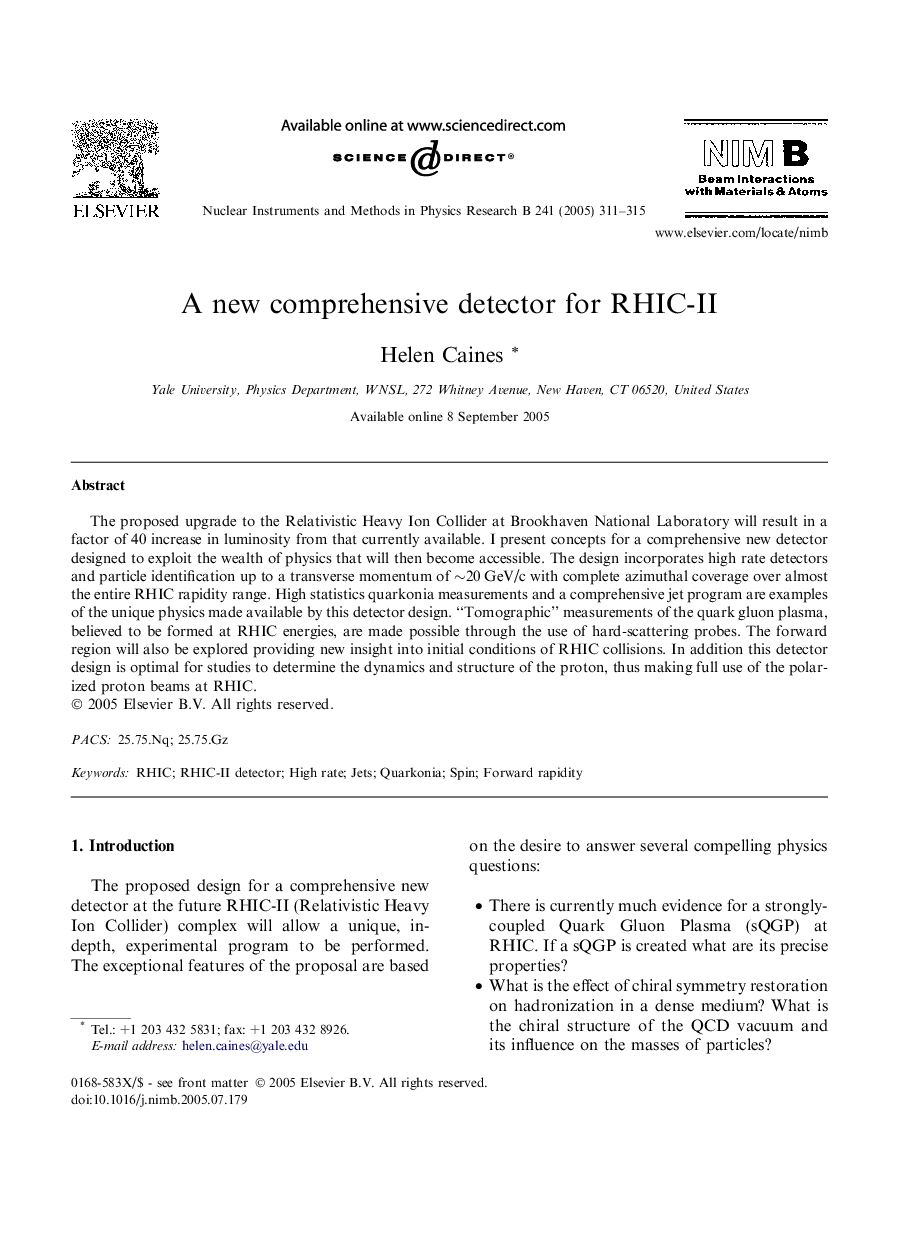| Article ID | Journal | Published Year | Pages | File Type |
|---|---|---|---|---|
| 9817455 | Nuclear Instruments and Methods in Physics Research Section B: Beam Interactions with Materials and Atoms | 2005 | 5 Pages |
Abstract
The proposed upgrade to the Relativistic Heavy Ion Collider at Brookhaven National Laboratory will result in a factor of 40 increase in luminosity from that currently available. I present concepts for a comprehensive new detector designed to exploit the wealth of physics that will then become accessible. The design incorporates high rate detectors and particle identification up to a transverse momentum of â¼20Â GeV/c with complete azimuthal coverage over almost the entire RHIC rapidity range. High statistics quarkonia measurements and a comprehensive jet program are examples of the unique physics made available by this detector design. “Tomographic” measurements of the quark gluon plasma, believed to be formed at RHIC energies, are made possible through the use of hard-scattering probes. The forward region will also be explored providing new insight into initial conditions of RHIC collisions. In addition this detector design is optimal for studies to determine the dynamics and structure of the proton, thus making full use of the polarized proton beams at RHIC.
Related Topics
Physical Sciences and Engineering
Materials Science
Surfaces, Coatings and Films
Authors
Helen Caines,
